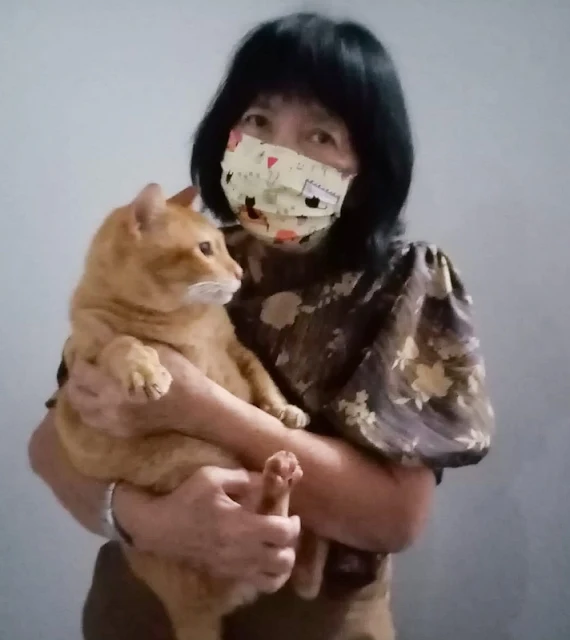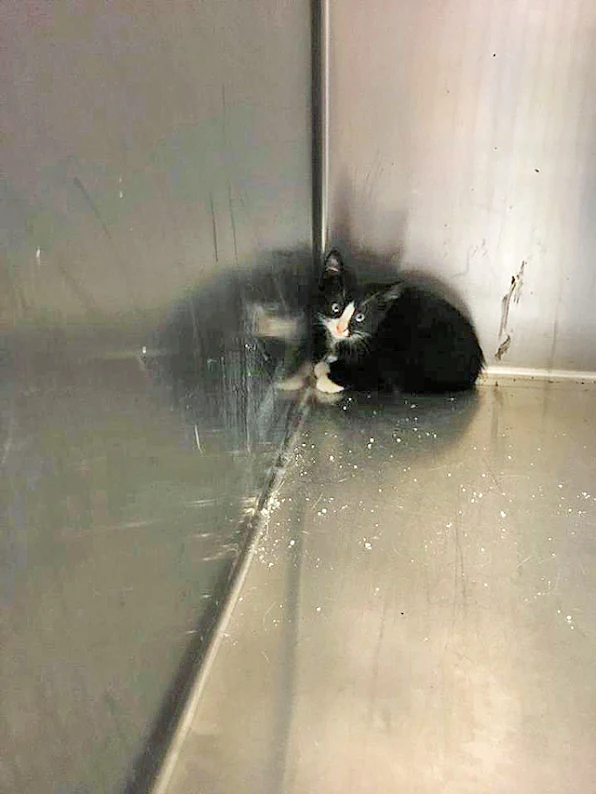LOUISVILLE, KENTUCKY-NEWS AND COMMENT: This is another one of those stories of domestic cat survival. They are always remarkable. This is no exception. You may have heard of the dramatic tornadoes that ripped through Tornado Alley and directly through Mayfield, Kentucky. It looks as if a tornado pretty well destroyed Mayfield.
 |
| Madix after the rescue. Photo: Hoot Gibson. |
In Mayfield there was a three-storey office building in the downtown area. This three-storey block included the offices of Sonny "Hoot" Gibson and his black cat, Madix, who greeted his customers. After the tornado passed through all that was left was rubble. Gibson was standing in that rubble on Sunday afternoon when he heard a faint meow.
Gibson's cat had not been seen since the tornado destroyed everything. He had tried to locate him without success and given up after a few days. He believed that nothing could have survived the tornado and the destruction it caused.
He thought that his mind was playing tricks so he hollered for his cat. He heard a muffled sound but couldn't locate Madix and asked some employees to help them.
Eventually they found Madix in a hole beneath the rubble. Gibson couldn't believe it. He said "It was just an incredible feeling to put him in my arms. If cats actually have nine lives, he probably used up about eight of them in that nine-day period."
RELATED: Cat survived in house for 52 days by eating paper.
Remarkably Madix was unscathed but very hungry and very thirsty. It is remarkable how they can stay in one place for so long without food and water and survive. There have been remarkable cases of domestic cats trapped in shipping containers for a month and surviving.
Gibson also said that it's a blessing for the people in Mayfield to hear the story as it lightens the mood and they "realise that great things can come out of terrible situations. If it's uplifting to one person, then Madix has served his purpose on this planet."
Source: Federal News Network











